
National Solar Observatory: 30 Hours Worth of Cona Science-Data Released nso.edu/blog/30-hour...
07.10.2025 15:38 — 👍 2 🔁 1 💬 0 📌 1@aura-astronomy.bsky.social
AURA is a leading organization in developing and operating world-class facilities to deliver forefront #astronomy #science #telescope #astrophysics #NASA #NSF

National Solar Observatory: 30 Hours Worth of Cona Science-Data Released nso.edu/blog/30-hour...
07.10.2025 15:38 — 👍 2 🔁 1 💬 0 📌 1
Artist's concept of a planet with a dark and light gray mottled surface moving out from behind its star. Most of the hemisphere in view is lit by the star, which has dynamic patterning and an orange coloring somewhat darker than the Sun.
Can a small planet maintain an atmosphere in the blazing light of a small, cool red dwarf star? #NASAWebb and Hubble are teaming up to find out. Learn more about the Rocky Worlds program designed to understand the most common type of planetary system in the galaxy: https://go.nasa.gov/3VLUJ1n 🔭 🧪
07.10.2025 14:48 — 👍 39 🔁 9 💬 0 📌 0
Did you miss last week's Deep Space Dialogues with STScI's Nestor Espinoza, as he chatted about atmospheres of distant exoplanets? Watch it now and learn about how #NASAWebb is dramatically changing our understanding of planetary systems in the cosmos. 🔭 🧪
22.09.2025 16:47 — 👍 37 🔁 10 💬 0 📌 1
The boot-shaped Rubin Observatory sits atop a rocky mountain peak under a clear blue sky. In the foreground, yellow wildflowers and desert shrubs grow among rugged brown rocks. A five-color palette beneath the photo shows dusty blue, light blue, green, gold, and brown.

The boot-shaped Rubin Observatory sits atop a rocky mountain peak under a clouded sky. The rugged brown rocks are draped in ice and snow. A five-color palette beneath the photo shows almost-black, light blue, light grayish blue, gray, and off-white.

A dramatic sunset over Cerro Pachón after a snow storm bathes the low-hanging clouds in pink and orange. A snow-dusted ridgeline cuts through the scene. A five-color palette beneath the photo shows a dark dusty blue, rich dark blue, pinky orange, light pink, and a darker dusty pink

An indistinguishable photo, the result of snow completely covering the camera. A five-color palette beneath the photo shows various shades of gray.
Are you more of a spring🌺 or winter❄️ palette? 🎨
Today is the September #equinox, the first day of spring in the Southern hemisphere. That means we’re swapping the cool, crisp tones of snow and winter for the fresh, warm hues of spring just around the corner.💐
🔭 🧪

An illustration showing a glowing white object in the upper left corner. This object is encircled by hundreds of thin, concentric, pale-yellow rings on an angle from bottom left to top right. The rings are palest closest to the central, glowing white object. A curving trail of gray, rock-like fragments marches across the right side, through the thin rings and joins the rings at far right. The eight largest fragments of varying sizes appear in the foreground. These objects have white, comet-like tails streaking away from the glowing white object in the rings’ center. The curving trail of fragments bends toward the glowing white object. At the bottom left corner is the label Artist’s Concept.
A nearby, burned-out star is eating a fragment of a Pluto-like object. Only Hubble could identify that this is taking place with its unique ultraviolet vision: https://bit.ly/4mZk6sx 🔭 🧪
18.09.2025 14:15 — 👍 76 🔁 12 💬 2 📌 5
TOMORROW (Sept. 17, 7 p.m. ET): STScI's Dr. Néstor Espinoza will explore some of the most exciting findings #NASAWebb is unveiling about the atmospheres of distant exoplanets. 🔭 🧪
https://youtube.com/live/i466qvWBQ1o?feature=share

Illustration of a star with multiple flares and four small orbiting planets. The star is off center to the lower right, with a silhouetted planet to its lower right. A second planet, also silhouetted, is shown to the left of the first planet. The second planet is closer to the star and appears much smaller. A third planet is directly to the left of the star, gray and white but without much detail, and farther out near the left edge of the image is the fourth planet, also gray with little detail. The words “Artist’s Concept” is in gray at the bottom left.
🔭 🧪 Seven Earth-sized worlds orbit the star TRAPPIST-1, but it is much more volatile than our sun. Scientists think the system’s fourth planet is the best candidate for maintaining an atmosphere and a habitable surface: https://bit.ly/47Pt4nh
08.09.2025 14:04 — 👍 79 🔁 21 💬 2 📌 2
Galaxy NGC 772 is known for its overdeveloped spiral arm, caused by tidal interactions with its neighboring dwarf galaxy NGC 770. This image was captured by the Gemini North telescope in Hawai‘i. #astronomy @aura-astronomy.bsky.social
📷: International Gemini Observatory/NOIRLab/NSF/AURA
🔭🧪
26.08.2025 14:58 — 👍 3 🔁 0 💬 0 📌 0
“Knowing more about the star in turn helps us learn even more about the planet, like a feedback loop,” said co-author Brett Morris, a senior software engineer at STScI. 🔭 🧪
https://science.nasa.gov/missions/tess/astronomers-map-stellar-polka-dots-using-nasas-tess-kepler/
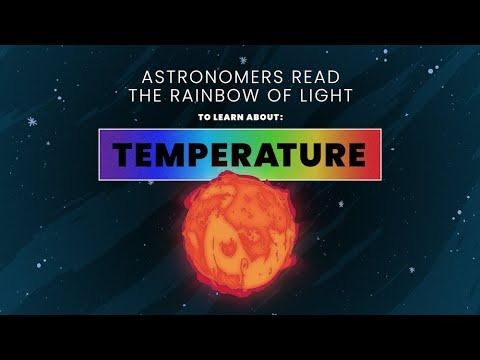
Discover how astronomers read spectra to determine the temperature of distant stars: https://youtu.be/VsS5FD5CwlE #Spectroscopy 🔭 🧪
26.08.2025 14:45 — 👍 21 🔁 3 💬 0 📌 0The more we look with #NASAWebb, the more we find! The latest discovery? A tiny new moon orbiting Uranus. It’s just six miles (9.6 kilometers) in diameter: science.nasa.gov/blogs/webb/2... 🔭 🧪
19.08.2025 15:04 — 👍 91 🔁 37 💬 1 📌 9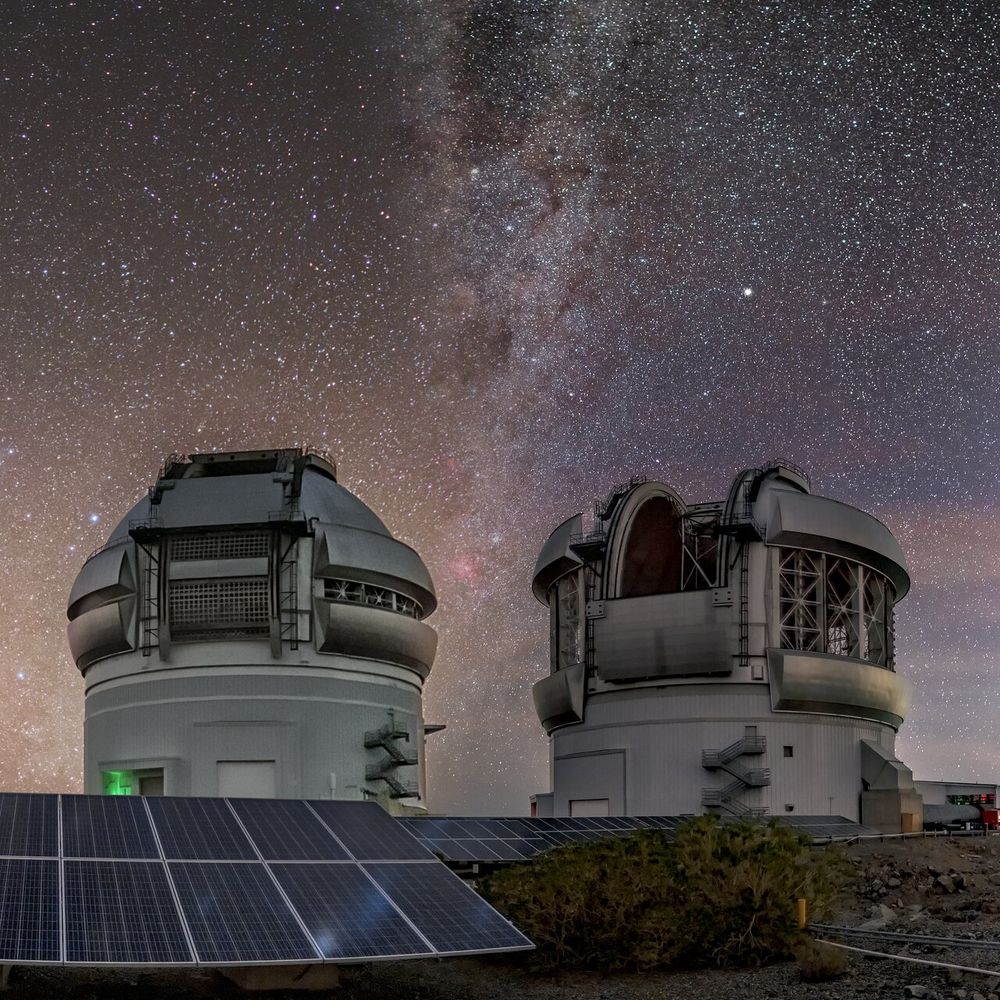
Gemini announced a special call for end-to-end testing and early science with its future observing system, the Gemini Program Platform. 20 hours available at each site for GMOS longslit in late September. The deadline is Aug. 22. www.gemini.edu/observing/ph... #astronomy @aura-astronomy.bsky.social
05.08.2025 15:56 — 👍 13 🔁 4 💬 0 📌 0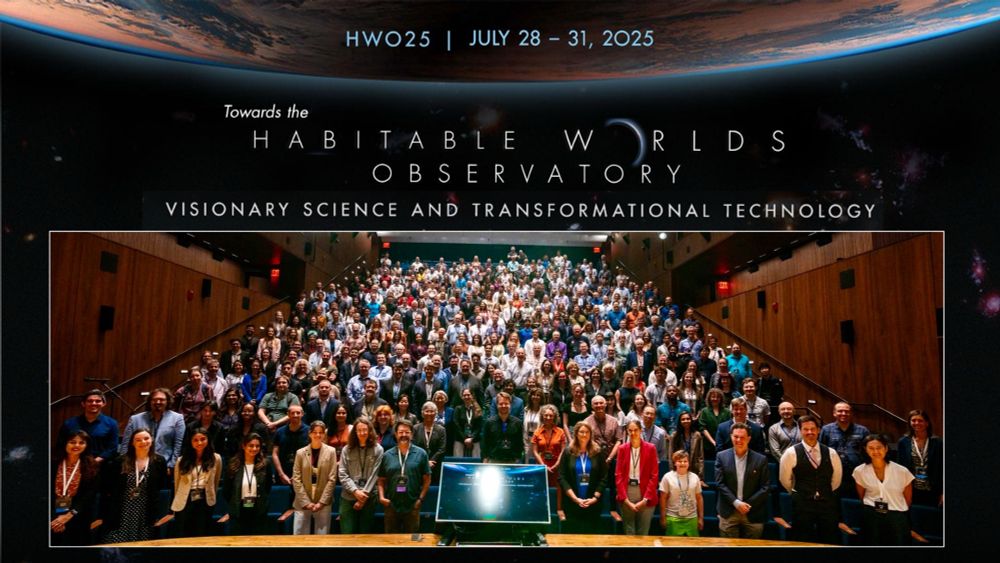
what a week for our future✨ #HWO25
🧵coming soon🔭🧪☄️
@mmacgreg.bsky.social @hbhammel.bsky.social @bmacastro.bsky.social @dawngelino.bsky.social
@aussiastronomer.bsky.social @stsci.edu @aura-astronomy.bsky.social @justtheletteru.bsky.social @vividreams.bsky.social @leefeinberg.bsky.social +500 others

Presentation titled 'Understanding the Cosmic Build-up of Dust and Molecules with HWO-UV Spectroscopy' by Julia Roman-Duval, who is standing at the podium. An image of a galaxy is displayed on a large screen above the speaker, who is addressing an auditorium full of attendees.
Dr. Julia Roman-Duval delivers a talk on how the Habitable Worlds Observatory's anticipated ultraviolet capabilities will help astronomers understand the cosmic build-up of dust in the universe. Dr. Roman-Duval is the Hubble mission office head at STScI. 🔭 🧪 ☄️ #HWO2025 #HWO25
28.07.2025 16:48 — 👍 66 🔁 9 💬 0 📌 1📷: RubinObs/NOIRLab/SLAC/DOE/NSF/AURA
1️⃣ "Cosmic Abundance," from Rubin's view of the Virgo Cluster
2️⃣ "Cosmic Drama," from Rubin's view of the Virgo Cluster
3️⃣ Trifid and Lagoon Nebulae
4️⃣ Messier 21, from Rubin's view of Trifid and Lagoon
🔭🧪
It's #WallpaperWednesday again! Get your #RubinFirstLook background here!
09.07.2025 14:48 — 👍 18 🔁 3 💬 1 📌 0🔭 join us at 11:00 am EDT!!
ls.st/rubin-first-look-livestream
The sneak peak images are amazing but tune in today for the main attractions! Today at 11:00 am EDT.
ls.st/rubin-first-look-livestream

Two observations of the Sombrero galaxy are split diagonally, with Webb’s near-infrared observation at the left and Webb’s mid-infrared observation on the right. The galaxy is a very oblong disk that extends from left to right at an angle, from about 10 o’clock to 5 o’clock. The galaxy’s core is in the center. In the near-infrared image at left, the galaxy’s center glows white and extends above and below the disk. The outer edge of the disk is mottled brown clumps. In the mid-infrared image, the galaxy is light blue and clumpy, like clouds in the sky. There is an inner disk that is clearer, with speckles of stars scattered throughout. The background of space is black, scattered with tiny dots in a range of colors.
NEW: #NASAWebb has revisited the iconic Sombrero galaxy, this time in near-infrared light. The galaxy is strikingly different than the recently released mid-infrared view: webbtelescope.pub/4jrp4eW 🔭 🧪
03.06.2025 14:02 — 👍 141 🔁 23 💬 1 📌 1
High-res observations of fine structure in the Sun’s corona hint at plasma features ~10 km in size. A new adaptive optics system reduces atmospheric image blur over a twisted plasma stream travelling at 90 km/s as it becomes unstable: https://bit.ly/43hhleJ #AstroSci
28.05.2025 15:07 — 👍 13 🔁 6 💬 0 📌 0
A rectangular image oriented horizontally appears to be two separate square images with a wide black gap in between. The two squares do not mirror each other exactly or align perfectly. It looks instead like they are two parts of a larger image that has been obscured in the middle by a black strip. Both squares are filled with blue, white, yellow, and red points of light of different size and brightness, most of which are stars. The larger and brighter stars show Webb’s distinctive diffraction pattern consisting of eight spikes radiating from the center. Both squares show an increase in density of stars toward the central gap. Altogether, the stars appear to form a loose ball-like shape whose core is obscured by the gap.
Sometimes the supporting characters steal the show.
When #NASAWebb imaged globular cluster M92, the gap between its NIRCam’s detectors blocked the bright, dense center. As a result of this black strip, the region’s outskirts show up clearly: bit.ly/4isAlvO 🔭 🧪

Watch as the familiar pattern of the Taurus constellation distorts into a whole new perspective, when revealed in three dimensions! 🔭 ☄️
23.05.2025 14:50 — 👍 37 🔁 10 💬 4 📌 0NSF–DOE Rubin Observatory is jointly funded by NSF and DOE. Once fully online later this year, Rubin will be jointly operated by NSF NOIRLab and DOE's SLAC. AURA manages the Rubin construction project and NSF NOIRLab through cooperative agreements with NSF.
23.05.2025 16:15 — 👍 2 🔁 0 💬 0 📌 0
Save-the-date graphic for the worldwide "First Look" at Rubin Observatory first revealed images. Text reads, "Save the date! June 23, 2025. NSF–DOE Rubin Observatory First Look"
🚨 SAVE THE DATE: The world's First Look at images from NSF–DOE Rubin Observatory is coming June 23, 2025! 🔭🧪
Get ready for a preview of how Rubin will soon #CaptureTheCosmos in its decade-long survey 🌌
More details soon—stay up to date at rubinobservatory.org/news/rubin-first-look

As we near Rubin Observatory's First Look, we can't stop talking about it 🗣️ See how the scientific community describes NSF–DOE Rubin Observatory to friends and family in the premiere of "Cosmic Clips!"🎬
Stay tuned for more as Rubin prepares to #CaptureTheCosmos ✨
🔭 🧪
youtu.be/wDA1S2O_ZQE
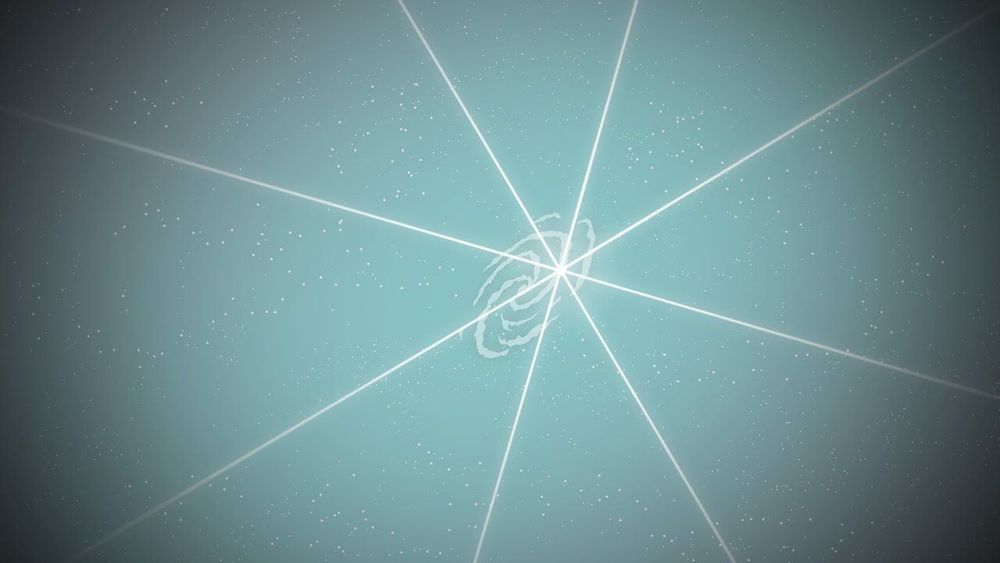
The @nsf-@doescience Rubin Observatory will take so many pictures of supernovae, they'll feel like POP stars 💥🤩
Rubin will observe millions of Type Ia supernovae, allowing scientists to calculate the distances to their galaxies and map our Universe🌌
🔭🧪
youtu.be/Gw7CBUjsHV8

Einstein rings occur when light from a very distant object is bent about a massive intermediate object. This is possible because spacetime, the fabric of the universe itself, is bent by mass, and therefore light traveling through space and time is bent as well. 🔭 🧪
21.05.2025 17:31 — 👍 84 🔁 18 💬 3 📌 0
An artist's depiction of the NASA spacecraft TESS, featuring solar panels and a detailed antenna, set against a starry space background.
Join us at #AAS246 in Alaska for the "Defeating Dr. Nefarious" interactive workshop! Use real data from NASA's Transiting Exoplanet Survey Satellite (TESS) to solve data challenges involving timeseries analysis, catalog cross-matching and cutouts. 🔭 🧪
Register for AAS: my.aas.org/AAS_Member/E...
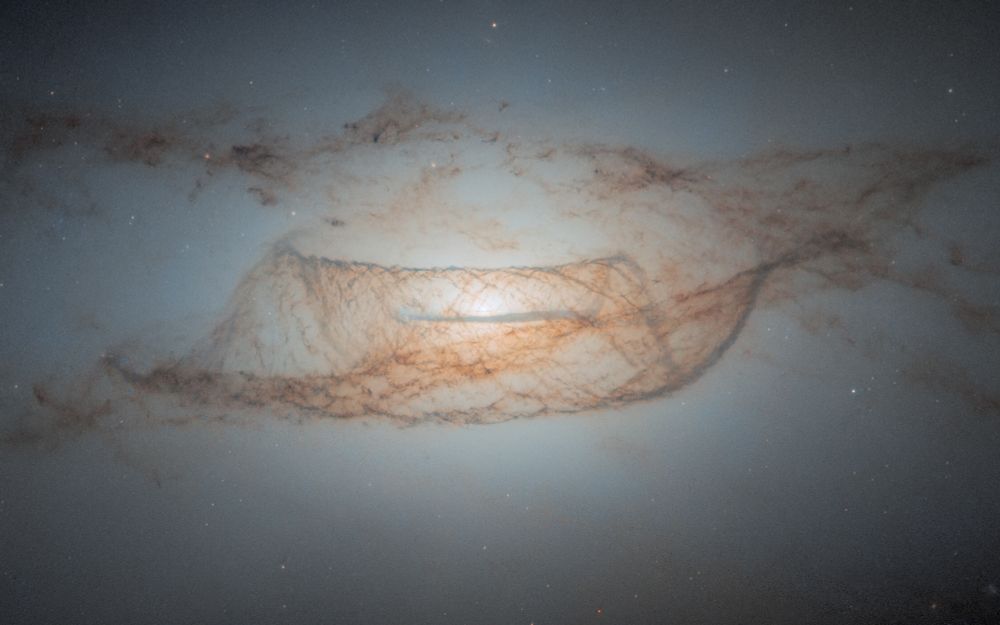
The central portion of a lenticular galaxy. The center holds a bright-white core that illuminates most of the image. The brightness decreases with distance from the center. Water-like waves of dark brown dust surround the center with long clouds of brown dust slightly above. Faint red stars are spread throughout.
Although NGC 4753, seen in this edge-on Hubble observation, appears to be exceptional, astronomers theorize that if one were to look at it from above it would look like a normal spiral galaxy: bit.ly/3G2bTmJ 🔭 🧪
22.05.2025 14:11 — 👍 135 🔁 24 💬 2 📌 3